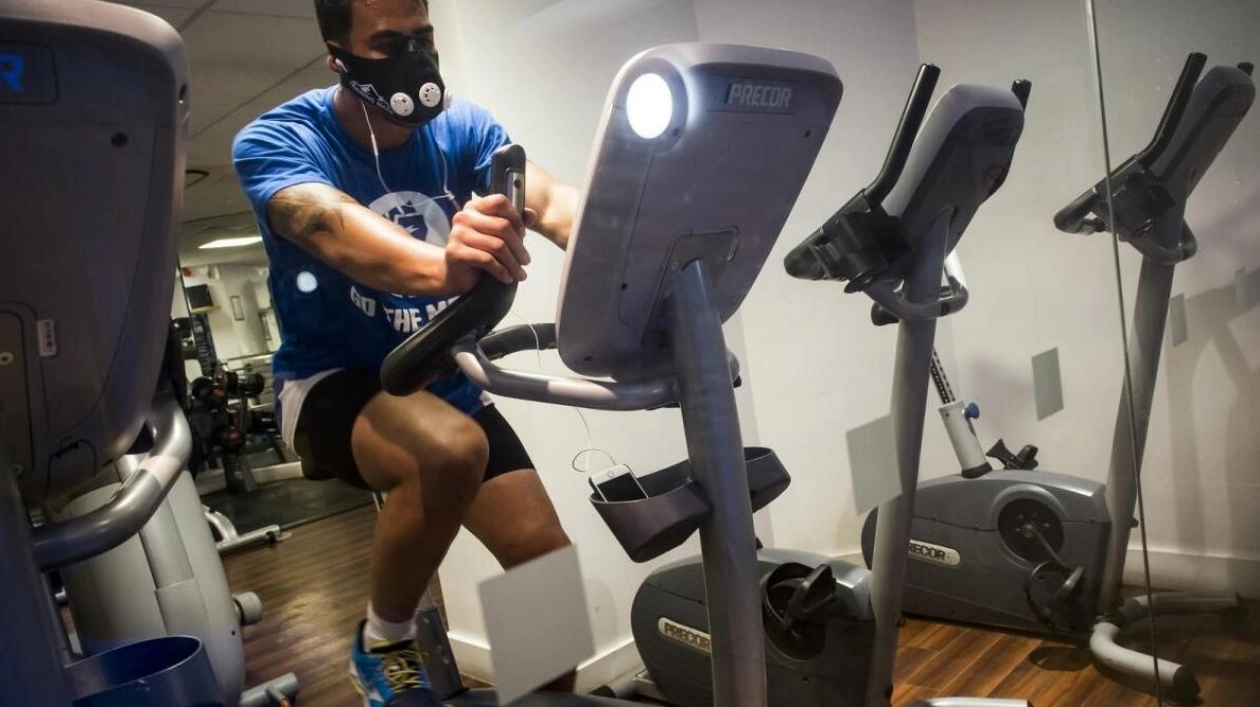The sudden passing of a Canadian billionaire in Dubai due to suspected cardiac arrest following a workout has led doctors in the UAE to issue a warning about the potential fatal consequences of vigorous physical activities for individuals with undiagnosed heart conditions. Doctors have observed that undiagnosed heart conditions can result in the sudden death of apparently healthy individuals during or after physical activities, including intense workouts or competitive sports.
Despite appearing healthy, the Canadian billionaire, aged 60, died in Dubai, while just two years prior, in January 2022, a 35-year-old former British footballer, described by friends and colleagues as exceptionally fit and active, also passed away while playing football in Dubai.
Speaking to Khaleej Times, Dr. Rahul Chaudhary, a consultant cardiologist and specialist interventional cardiologist at International Modern Hospital Dubai, expressed concern about the rising instances of young people collapsing during sports or strenuous workouts. This phenomenon, often associated with sudden cardiac arrest, poses a significant health risk that necessitates immediate attention and intervention to prevent fatal outcomes.
Medical studies have indicated that excessive exercise, surpassing two to three times the recommended 150 minutes per week, can elevate the risk of heart disease and sudden cardiac arrest. Dr. Shaheen Ahmad, a specialist interventional cardiologist at Zulekha Hospital Dubai, strongly advised commencing gym activities gradually and progressively, avoiding overly strenuous activities from the outset. Furthermore, Dr. Ahmad recommended that gym trainers receive training in cardiopulmonary resuscitation maneuvers and the operation of an automated external defibrillator (AED), with such equipment being readily available in the gym to provide immediate assistance in emergencies. These precautions and measures can enhance the safety of individuals during gym activities.
Dr. Chaudhary explained that sudden cardiac arrest occurs when the heart abruptly ceases to beat, leading to reduced blood supply to the brain and causing the patient to lose consciousness. If not promptly treated, this can result in death. He highlighted that the most common cause of sudden cardiac arrest is a heart attack, which transpires when the blood supply to the heart is suddenly obstructed. Dr. Chaudhary emphasized that while heart attacks are the primary cause of sudden cardiac arrest, young athletes and those engaging in vigorous physical activity may have other underlying heart conditions.
Both Dr. Chaudhary and Dr. Ahmad recommend a balanced approach to physical activity. Individuals over the age of 30 to 35 are advised to undergo regular health check-ups to detect and manage any risk factors at an early stage, such as high blood pressure, blood sugar, cholesterol levels, and other indicators.
Additionally, individuals aged 40 and above planning to engage in intense gym activities should undergo risk factor evaluation beforehand. Factors such as uncontrolled diabetes, undiagnosed hypertension, high cholesterol, smoking, obesity, and sedentary lifestyles can heighten the likelihood of heart disease and sudden heart attacks. Those with such risk factors are encouraged to consult their doctors to address them before commencing strenuous gym activities.
Doctors stressed the importance of engaging in regular physical activities, ensuring adequate sleep, reducing stress, and maintaining a healthy diet rich in fruits, vegetables, and Omega-3 fatty acids, while avoiding packaged and saturated fats. Furthermore, understanding the risk factors for heart attacks, including smoking, high blood pressure, elevated cholesterol, diabetes, abdominal obesity, a sedentary lifestyle, stress, insufficient sleep, and a family history of heart disease, is crucial.
Dr. Chaudhary cautioned that the survival rate for out-of-hospital sudden cardiac arrest is dismally low, with less than 10 percent of patients surviving, and even in-hospital cardiac arrests have a survival rate of less than 20 percent. He underlined that the only intervention that can significantly improve survival chances is cardiopulmonary resuscitation (CPR), and therefore, advocating basic CPR techniques and integrating CPR training into school curriculums could be life-saving.






